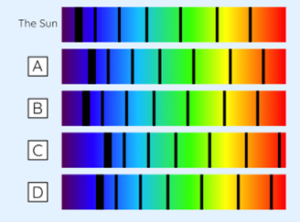If you’re looking to support a student as they prepare for their GCSE physics exams, our tutors can help. Every one of our dedicated tutors has experience helping students develop the skills and confidence they need to ace their exams.
Our GCSE physics tuition draws on our library of over 35,000 hours of targeted content, ensuring that our tutors can create engaging and relevant sessions for every student’s unique needs.
Here are some sample year 11 physics questions from our library.
Eight sample GCSE chemistry questions
1. Fill the gap with a suitable word. “The law of the conservation of energy states: energy cannot be created or destroyed, only changed to another form. This means all of the energy input has to be t__________ to another form.”
2. Match the statements to form correct sentences:
| Sunlight consists of… | …Silicon crystals |
| The reaction between Silicon crystals and sunlight… | …allows energy to flow to power stations and outlets across the UK. |
| Cables and wires in the National Grid… | …ultraviolet, visible and infra-red rays. |
| Solar panels contain… | …electricity made through burning fossil fuels. |
| Solar energy is better for the environment than… | …clean energy. |
| Solar energy is… | …results in an electric current being produced. |
3. A spanner is used to undo a nut. A force of 25 N is applied to the end of the spanner. The spanner is 18 cm away from the centre of the nut. Calculate the moment when the spanner is horizontal to one decimal place.
4. Use the emission spectrum of light from the Sun to work out which galaxy is moving the fastest away from Earth.

5. Look at the circuit below and answer the question: What is the potential difference across the 80Ω resistance?

6. Ultrasound is used in medicine to view a foetus inside the uterus. A transducer produces and detects beams of ultrasound waves into the body. We know that the foetus is 0.03m away from the transducer and it takes 0.00004s for the ultrasound to be detected by the transducer. Calculate the speed of the ultrasound.
7. Select the correct word to make the statement true: Protons have a mass of 1 and a ________ charge.
– Positive
– Negative
– Neutral
8. Calculate the distance travelled in section C of this velocity-time graph to one decimal place.

Answers to our GCSE physics questions
1. Transferred
2. Sunlight consists of ultraviolet, visible and infra-red rays.
a. The reaction between Silicon crystals and sunlight results in an electric current being produced.
b. Cables and wires in the National Grid allow energy to flow to power stations and outlets across the UK.
c. Solar panels contain Silicon crystals.
d. Solar energy is better for the environment than electricity made through burning fossil fuels.
e. Solar energy is clean energy.
3. 4.5Nm
4. C
5. 16V
6. 750cm/s
7. Positive
8. 12.5m
Contact us for affordable, effective GCSE science tuition
Whether your child is sitting double or triple science, our GCSE science tuition can help them go into the exam room with confidence and come out with the results they deserve.
In addition to working directly with parents, we are a preferred tuition provider for over 500 schools nationwide and a government-certified quality assured tuition partner.
Get in touch today to find out more about online tutoring for schools.
Written by Ryan Lockett, director of studies at TLC.